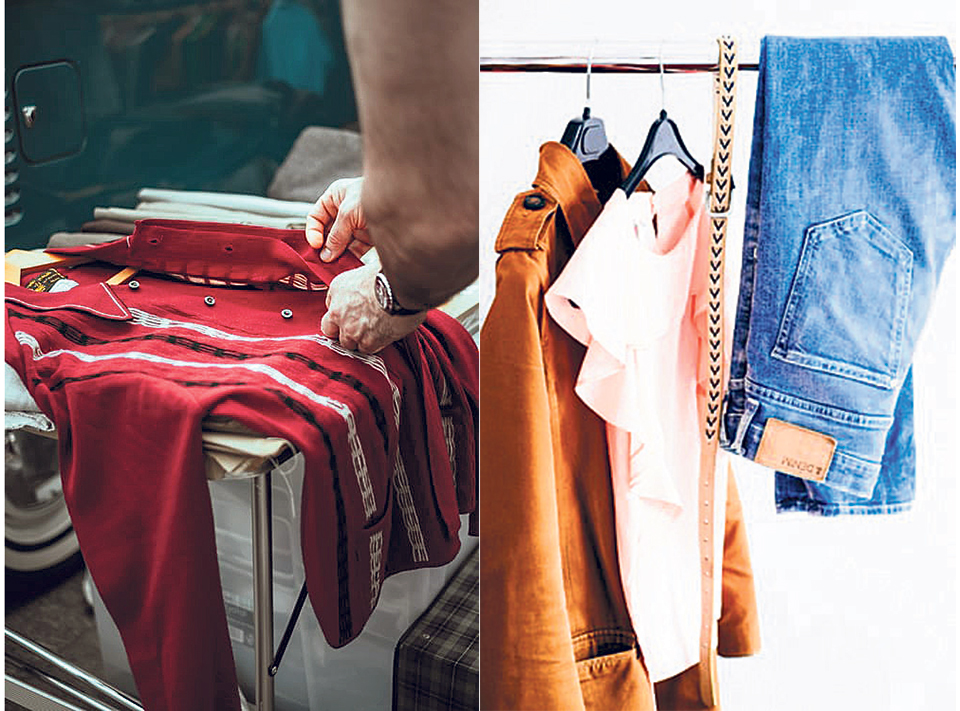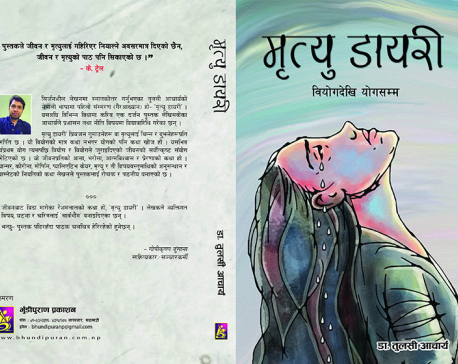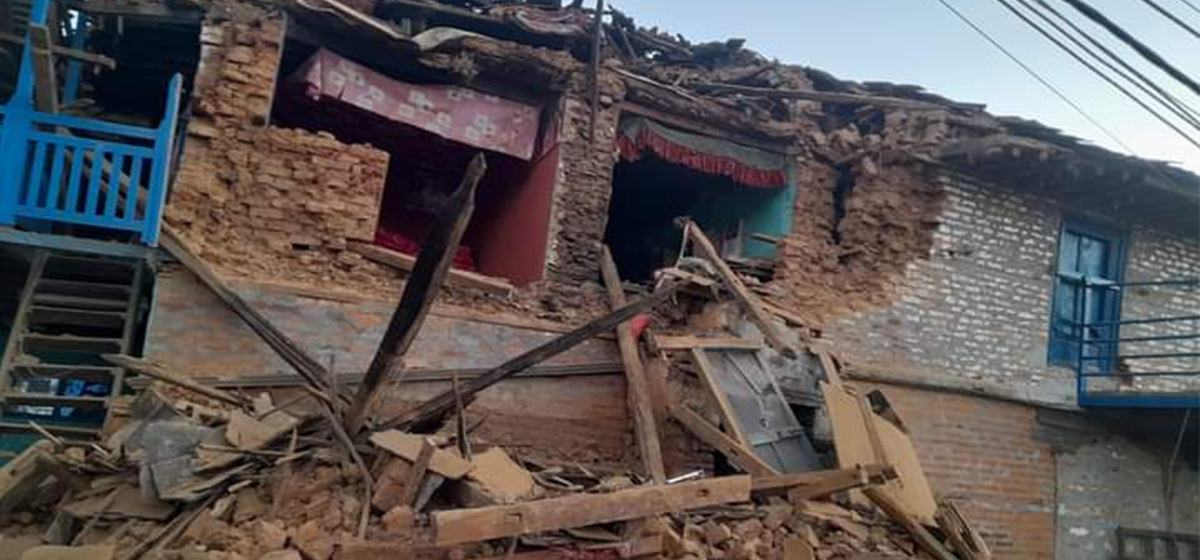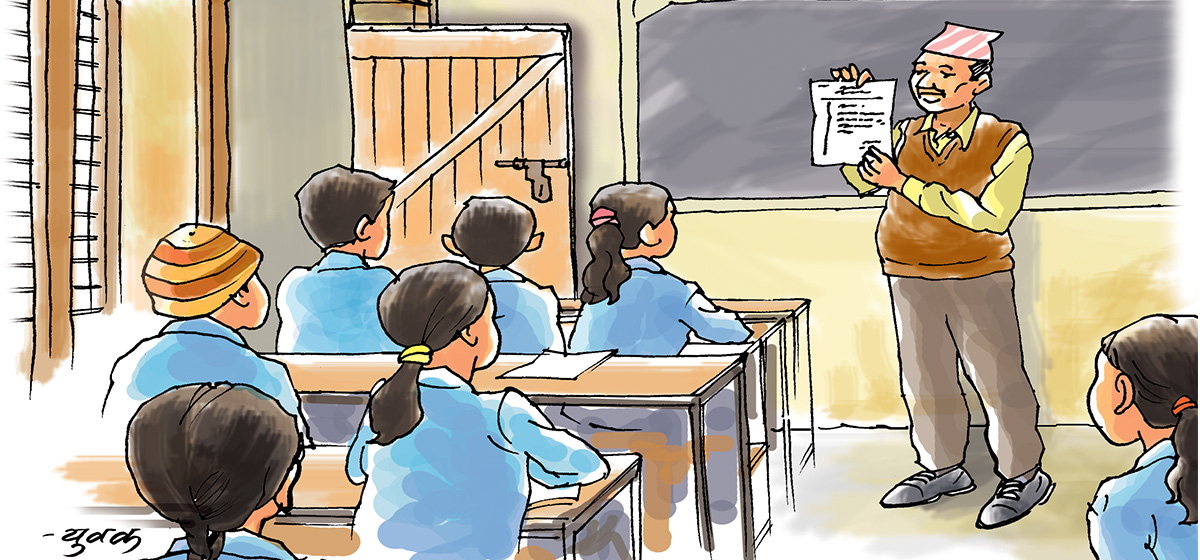
OR
Thrifting Economical and environmentally friendly
Published On: March 13, 2020 10:38 AM NPT By: Anweiti Upadhyay

When influencer and blogger Anusmriti Chapagain started getting messages from her followers asking her to sell her own clothing items (that she didn’t use anymore), she decided to give thrifting a shot. She didn’t really think her followers would even be interested in the items she was reselling but, to her surprise, all the items sold out in the blink of an eye. Now, Chapagain runs an Instagram store (@heyygirlboss) selling both new, imported items and her own pre-owned pieces.
Like Chapagain, a lot of Nepalis have started reselling various items on Instagram in the past year. Most of these Instagram accounts only sell fashion items (like clothing and accessories) but there some accounts that sell other things like books, musical instruments and furniture among others.
“I think influencer Sanna Gurung brought this movement in Nepal when she opened her thrift account,” says Raisha Joshi admitting that she too was inspired by Gurung to open an Instagram page (@thriftnepal04) solely dedicated to thrifting. She further claims that most other thrift accounts that she has spoken to have also claimed that they opened their pages after seeing Gurung’s page.
Gurung who has over 100,000 followers on her personal Instagram account started the thrift account @byee.sanna in mid 2019. This account that currently boasts over 2500 followers is one of the most popular Nepali thrift pages on Instagram. And besides selling her own products on this page, Gurung constantly promotes products of other sellers and gives shout outs to other Nepali thrift pages. She has also created her own hashtag, #byeesanna, for thrifting in Nepal so that buyers can find thrift items and sellers more easily.
Other than Gurung, pop culture and media in general seems to have inspired many Nepali youths to start selling and buying pre-owned items. Aagya Tuladhar, a grade 12 student who runs a thrifting page with her older sister (@finders.keepers_thrift), says she and her sister, looked into thrifting after hearing about it in a lot of Western TV shows. “Although thrifting is a relatively new concept in Nepal, the Western world has been doing this for ages,” she says.
And like Tuladhar mentioned, thrifting culture seems to have started around the late 1800s in the US. The Salvation Army (launched in 1897) and Goodwill (launched in 1902) are some of the first thrift stores in America that helped popularize this culture. A 2018 Time article on the history of thrifting states that although the general population initially thought these shops sold junk items, after the Great Depression and World War II, more people seemed to be frequenting these thrift shops to both sell their own old clothes and buy things they needed. Additionally, according to a 2019 business report by IBISWorld, thrifting is currently a $14.4 billion industry in the US alone.
Most sellers The Week spoke to revealed that they view their thrift page as an easy way to earn extra cash by selling products they no longer intend to use. Aaisha Khanal, a second year BBA student, says that because she likes dressing up fashionably, she frequently buys new clothes and has a habit of hoarding clothes even though she hasn’t worn half the clothes she owns in the past year. Now that she has come across the concept of thrifting, she is slowly selling everything she doesn’t wear anymore.
“I get to downsize my wardrobe while earning some extra cash from it which is great,” says Khanal who runs the page @thrift.closet_k.
Other sellers say that because they buy a lot of clothing and accessories online these days, sometimes the items they get doesn’t fit them properly so they resell these items. “The sizes of products seem to vary according to the brands. Sometimes even when I buy a size that generally fits me well, when I get the item it’s either too big or too small. So, I have no option other than to resell those pieces,” says Namu Sherpa who also operates her own Instagram thrift page (@thriftnepal8).
Some sellers, however, seem to view thrifting as something that is very important to practice in today’s world since it helps lessen environmental pollution and exploitation to an extent.
“The statistics about the waste produced by the fashion industry and the sheer amount of resources used to make clothing in general are terrifying,” says fashion design student Shrijana Rai, who runs the Instagram account @keep_thriftingshop, citing a 2019 article by World Resources Organization Institute which claims that 2,700 liters of water—which is enough water needed by a single person to drink over two and half years—is required to make a single cotton shirt and that producing a single pair of jeans releases as much greenhouse gases as driving over 80 miles in a car.
This article also states that clothing production has doubled in the last 15 years and on average people bought 60 percent more clothing in 2014 than in 2000 but used these items for half as long, generating a huge amount of waste. Additionally, the article mentions that a truck full of clothing thrown out by consumers is burned every second at some part of the world.
“So, keeping all of this in mind, buying pre-used clothes seems like a better option to me—to reduce the effects of clothing production on the environment than buying brand new clothes,” says Rai explaining that if more people start reselling and buying second-hand clothes instead of giving in to fast fashion then this impact can be reduced significantly.
Other than selling their own pre-owned items, some of these Instagram run thrift stores also post pictures and details of items sent in by other people. “I started getting messages from people who wanted to sell a few pre-owned items but either didn’t want to open a new account solely for that or were not planning to continue selling other things after these products were sold. So, now I sell some stuff from other people as well,” says Khanal adding that if anyone seems interested to buy these items then she just connects them to the original seller.
Although most thrift pages The Week spoke to revealed that they sell out a lot of their items very quickly—within a few days to a week of uploading it on their pages—and most buyers seem to be very enthusiastic about buying thrift finds, they do admit that they have to occasionally deal with people who seem to be very hesitant and skeptical about buying pre-owned products.
“I can see where the hesitation comes from but I and a lot of other sellers I know are honest about the condition of the clothes and the reason why we are selling them,” says Joshi adding that many times the items she sells are practically new—things that she was gifted but doesn’t like or things she purchased online that don’t fit her right anymore. Additionally, all the sellers The Week spoke to revealed that they always wash and clean their clothes properly before putting them up for sale.
Adding to Joshi’s statement, Rai mentions that she has also swapped clothes with and bought items from other sellers and has always found those products to be in excellent condition. She further adds that scamming buyers would harm the seller’s image and since most sellers sell multiple items, they wouldn’t lie.
“This is a new practice in Nepal and it will take some time before it is widely accepted. But I hope more people give it a try as it is a more affordable way to shop and helps the environment at the same time,” concludes Rai.
anweitiupadhyay@gmail.com
You May Like This

Life is never too pointless to be ended
"Priye Sufi," a book by Nepali author Subin Bhattarai, is a moving and consoling book. The story's primary lesson is... Read More...

'ULFA: The Mirage of Dawn’ offers a remarkably balanced narration on history of ULFA
Rajeev Bhattacharyya’s book offers a remarkable history of ULFA, its formation and rise to prominence, the interplay of its principal... Read More...

Mrityu Diary: A must read book about life and death
"Mrityu Diary" or the “Death Diary” is a book written by the author Tulasi Acharya, which is currently available in... Read More...







Just In
- Nepal's Seismic Struggle and Ongoing Recovery Dynamics
- Shrestha nominated as Chairman of NCC's Advisory Council
- Take necessary measures to ensure education for all children
- Nepalgunj ICP handed over to Nepal, to come into operation from May 8
- Nepal to gift two elephants to Qatar during Emir's state visit
- NUP Chair Shrestha: Resham Chaudhary, convicted in Tikapur murder case, ineligible for party membership
- Dr Ram Kantha Makaju Shrestha: A visionary leader transforming healthcare in Nepal
- Let us present practical projects, not 'wish list': PM Dahal



_20240423174443.jpg)







Leave A Comment